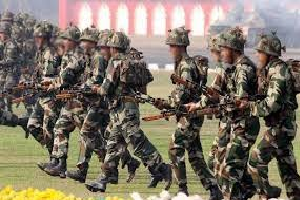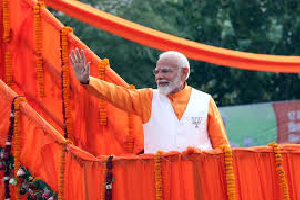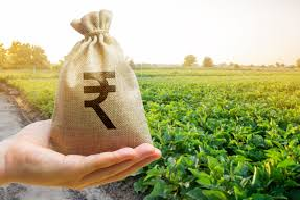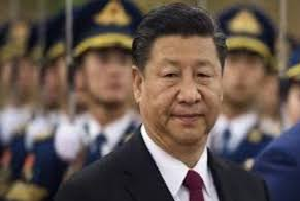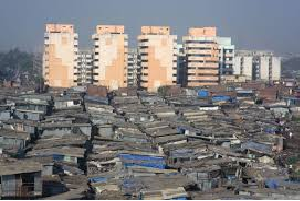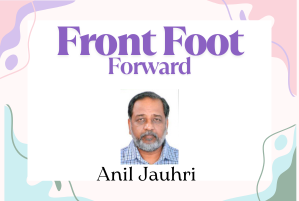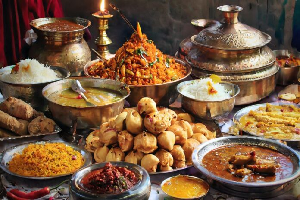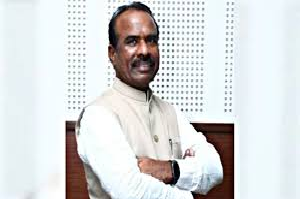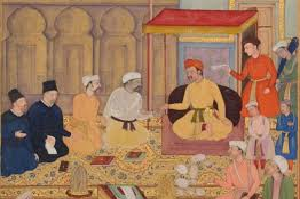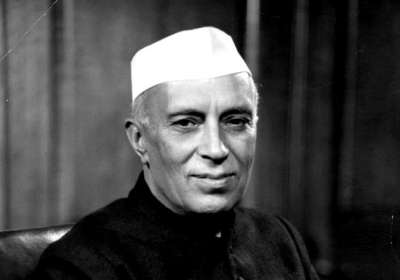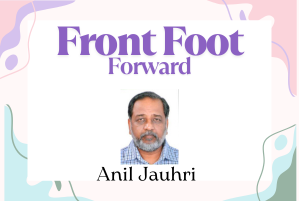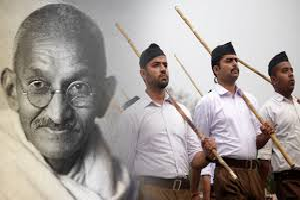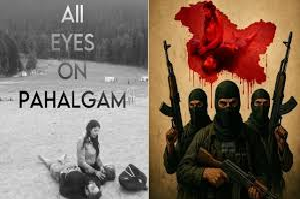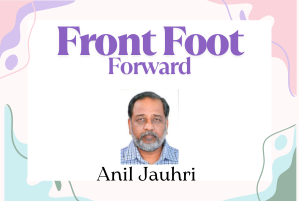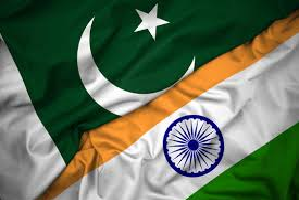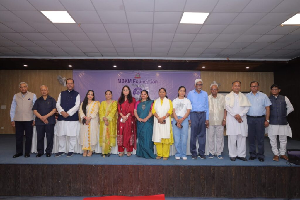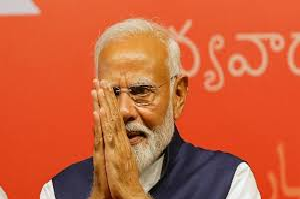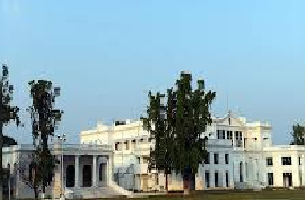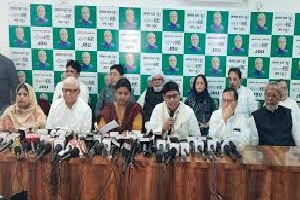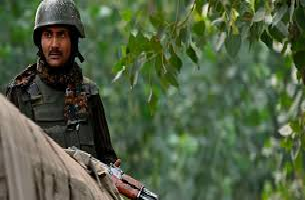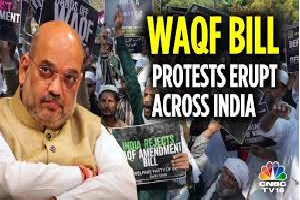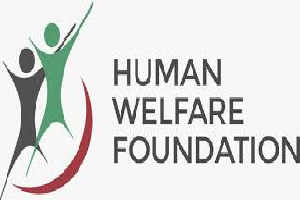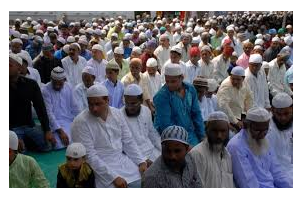2

Today’s Edition
New Delhi, 2 February 2024
Shivaji Sarkar
With elections around the corner it was expected to be a populist budget. But the populism par excellence weaved into it was unexpected. Though one could get a hint of the Modi Government 's self -congratulatory drive in President Droupadi Murmu 's address to the joint session of Parliament, it was a job done to perfection by Finance Minister Nirmala Sitaraman in her budget speech .
Finance Minister Nirmala Sitharaman talks of all good things. She harps on need to give hope to the people, attract investments, increase capital expenditure, focus on rural recovery -- housing, post-harvest activities, programmes for farmers—measures for women, middle classes , a dream GDP growth of 7.3 percent and what not..
The election angle comes out in the open as she announces bringing out a White Paper on mismanagement of the economy till the year 2014 --an era of one of the five fragile economies led by Congress government.
In a highly populist tone Sitharaman says that the poor people, youth, women, and farmers would be the four ‘strong pillars’ of Viksit Bharat. Various programmes of the government ill take them on the path to progress and growth. She harps repeatedly on all kinds of farming classes – farmers, fishermen and dairy developers, potential voters.
The interim budget is not without its focus to impress. It has large figures like Rs 47.65 lakh crore expenditure (about Rs 3 lakh crore more than 2023-4), Rs 30.8 lakh crore revenue including Rs 26.06 lakh crore from taxes, capital expenditure outlay rise by 11.1 percent to Rs 11,11,111 crore, 3.4 percent of GDP, a 50-year-interest free innovation loan and foreign direct investment of $ 596 billion – twice the inflow during 2005-2014, the UPA period.
But matter of concern is its fiscal deficit and maturity of dated securities, long term bonds that are to mature and have to be repaid. Though technically fiscal deficit comes down to 5.1 percent from last year’s 5.8 percent, gross and net borrowings through dated securities, she says, would be Rs 14.25 and 11.75 lakh crore. Total debt, external and internal, at Rs 168.72 lakh crore on March 31, 2024 is set to rise to 183.67 lakh crore. Outstanding debt has increased by Rs 15 lakh crore entailing the higher interest liabilities.
One interesting factor is that technically in economic terms she is right. Debt is earning and boosts GDP. The finance ministry so far has never reneged on its repayment commitments. The debt burden seems higher than revenue earnings.
The Finance Minister has cut Rs 32,000 crore subsidies in food, fertiliser and petroleum. The food subsidy cut comes amid the rising minimum support prices. It banks on a reduction of a number of beneficiaries following Adhar linkages. The allocation to MNREGA, however, is raised to Rs 86,000 crore from Rs 60,000 crore of the current fiscal.
Outgo to states as their share of revenue is Rs 22.22 lakh crore. Interest payment liability has been budgeted at Rs 11.90 lakh crore, 10.18 percent more than 2023-24.
The innovation funding as interest free loans for 50 years may be reviewed. The timeframe is too long though it may give a psychological edge.
She has not announced any concession on the tax front. The highest income tax rates remain at 39 per cent while corporate tax remains at 22 per cent and a new venture 15 per cent. Her core supporters are critical as she ignores the “middle class” facing high cumulative inflation of 27.5 per cent in five years at the rate of RBI’s 5.5 per cent a year. One comment is interesting. It says, “We are not a vote bank that needs to be appeased”.
Expectedly her focus is on climate, farmers, agriculture growth and other measures that would immensely improve the conditions of the people as per the principle of ‘Reform, Perform and Transform’ and goes on to include MSMEs, aspirational districts, Eastern region and its people – Bihar and Bengal the key electoral target! For the first time she mentions housing for the middle class “living in rented houses, or slums, chawls and unauthorised colonies” to buy or build their own houses.
Along with are mentioned agriculture and food processing to employ 10 lakh persons, post-harvest activities including aggregation, modern storage, supply chains and marketing, intense dairy development, setting up of fisheries department to boost Matsya Sampada, five aquatic parks and sea food exports. Also announced is Atmanirbhar Oilseeds Abhiyan. The premise is that these sectors would transform critical sectors and please the crucial electorate in the farm sector in various parts of the country. However, a difference between farmgate prices and high retail for consumers has yet to be bridged.
The budget also cuts Rs 32,000 crore subsidies in food, fertiliser and petroleum.
Women have been wooed in different ways. A laudable scheme of course is vaccination for girls in age group of 9 to 14 for prevention of cervical cancer. Similarly, maternal and child health care is being brought under one comprehensive programme. Anganvadis are upgraded as centres for nutrition delivery, early childhood care and development. Ayushman Bharat benefits are being extended to all Asha, Anganvadi and helpers. It is expected to incentivise the grassroots workers.
Overall health has got Rs 1095 crore more at Rs 90,170 crore and education Rs 13000 crore at Rs 1.25 lakh crore.
The finance minister is buoyant on consumer confidence and has subtle satisfaction with inflation being in the 2 to 6 per cent range even though the RBI has been insisting on 4 per cent target for , stabilising the economy.
The budget has many promises making good noises but one only hopes that the final July budget would be different. ( Words 970)
---------------


